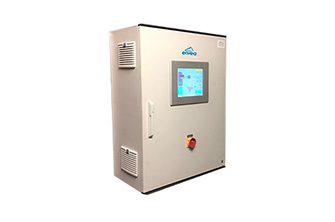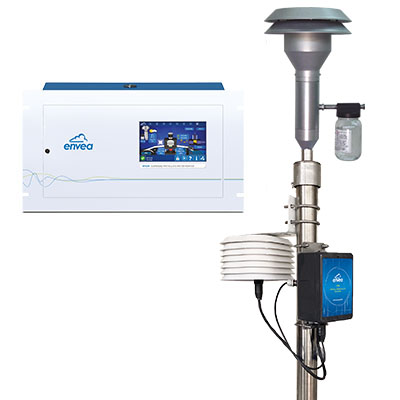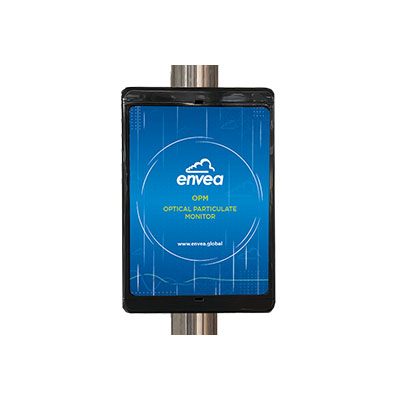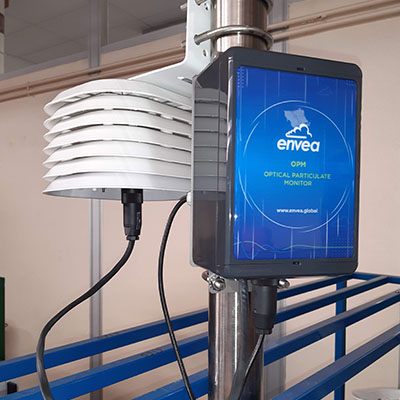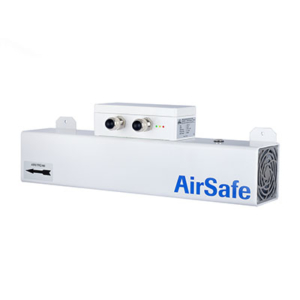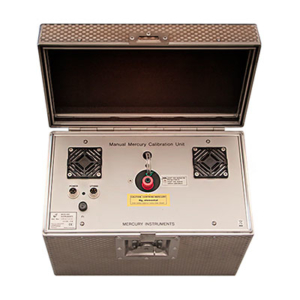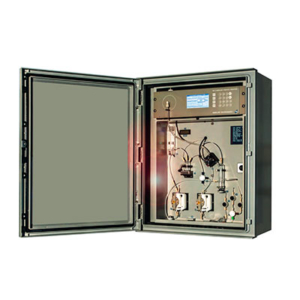Automatic & Real-Time Suspended Particulate Monitor
MP101M Beta gauge monitor with its optional OPM (Optical Particulate Monitor)
The standard Beta gauge measurement Method ISO 10473 of the MP101M analyzer allows, when used with the optical technology of the OPM module, the continuous and simultaneous measurement of fine dust.
The beta attenuation instrument is compliant with EN 16450 for PM10 and PM2.5 European Standards. QAL1 certified by the TÜV, the MP101M is also approved as Federal Equivalent Method (FEM) by US EPA for PM10 and PM2.5 continuous suspended particulate monitoring.
- Precise beta attenuation monitoring of PM10, PM2.5, PM1
- Real time optical indication about PM10, PM2.5, PM1 mass concentration (μg/m3) using an independent inlet
- Features & Benefits
- Main applications
- Technical Specification
- Options & Accessories
- Principle of operation
- Downloads
- True volumetric air flow control with 3 atmospheric pressure and temperature sensors
- Sampling flow-rate continuously regulated to the atmospheric temperature and pressure: reduces evaporation artefacts of volatile compounds (mandatory for PM2.5 according to EU regulations)
- Automatic calibration of the real time optical module (OPM) to the reference measurement (ß gauge)
- Flow calibration possible during the measurement
- Built-in reference gauge for calibration: no need for factory re-calibration
- Calibration screen for atmospheric pressure sensors
- Regulated Sampling Tube (RST) compliant with CEN PM10 and US-EPA standard: sample not affected by seasonal or geographical factors and avoids evaporative losses of semi-volatile particles
- Fibreglass tape with 3 years of autonomy of continuous sampling with daily cycles (1200 cycles)
- Low activity C14 sealed flat source with analyzer lifetime duration
- Rugged instrument, not sensitive to vibration, humidity, temperature…
- New: On board web server compatible with any internet browser. ENVEA Connect™ user interface with on-line help for the display, configuration, maintenance, diagnostics or software updating of the analyser, remotely, from any PC, tablet or smartphone.
- Ambient air quality monitoring
- Indoor dust monitoring
- Working places
| MP101M Technical specifications | |
|---|---|
| Measured parameter | PM10, PM2.5, PM1, TSP |
| Technology | Beta Ray Attenuation |
| US-EPA Approval / QAL 1 Certification | YES |
| Measurement ranges | up to 10 000 μg/m3 |
| Measurement units | µg/m3 |
| Lower Detectable Limit (2σ) | 0.5 μg/m3 (24h average) |
| Sample flow rate | 1 m³/h |
| Sampling pump | External (vacuum pump) |
| Temperature range | +5°C to 40°C |
| Data storage | Unlimited |
| Included I/O | LAN/USB/WIFI/AO |
| Weight (Kg) | 15.2 (+pump: Picolino 4.6Kg / KNF 9.4Kg) |
| Dimensions mm (LxWxH) | 360.5 x 483 x 266 |
| Chassis | 19″ Rack, 3U |
| Pressure and temperature compensation | YES |
| OPM Technical specifications | |
|---|---|
| Technology | Light scattering (*) |
| Max. concentration | 0-1000 μg/m3 |
| Range of size | 0.3-10 μm |
| Lower detection limit | 1 μg/m3 |
| Temporal resolution | 1 second |
| Dimensions (WxDxH) | 230 x 370 x 200 mm |
| Flow | 2.5 L/min |
(*) Light scattering technologies applied to particle mass concentration measure can be affected by aerosols chemical composition and atmospheric conditions & should be subject to operator interpretation.
- OPM module for optical real-time measurement
- US EPA and EU-CEN compliant sampling inlets
- Temperature-regulated sampling tube (RST): 1 m, 1.5 m, 2 m, 2.75 m, compliant with CEN PM10 Directive
- Max 2 ESTEL electronic boards with:
– 4 independent analog inputs / outputs
– 4 remote control inputs
– 6 dry contacts outputs - External pump assembly: diaphragm (9.5kg), rotary vane (7kg)
- Easy to install span calibration module for automatic and programmable calibrations
- Field connection kit for leak and zero test (on RST tube)
- Laboratory connection kit for leak and zero test (on MP101M)
- Bead flowmeter for leak test
- HEPA filter for zero test
Low energy beta rays are absorbed by collision of dust, whose number is proportional to density. Absorption is thus a function of the mass of the irradiated material, independently of its physico-chemical nature.
Combination of both technologies provides simultaneously approved particulate measurement PLUS real-time indication of PM10, PM2.5 and PM1.
